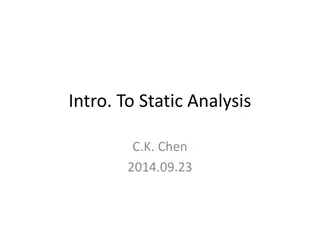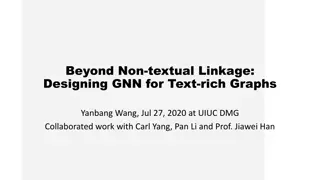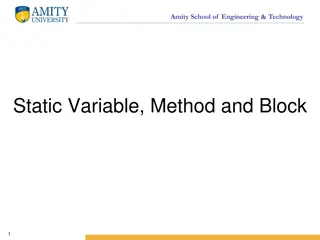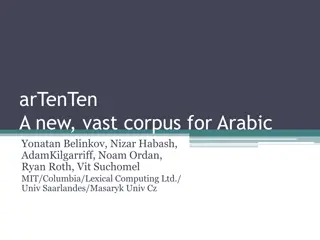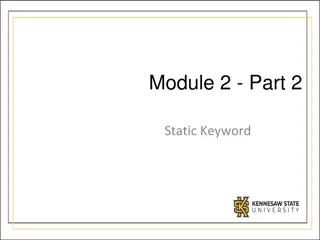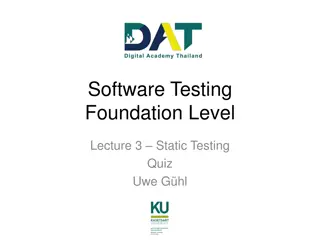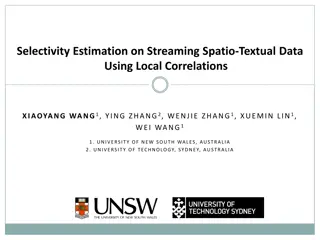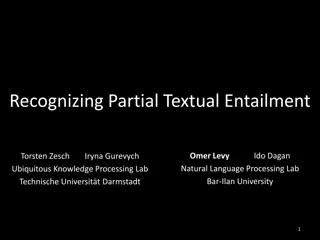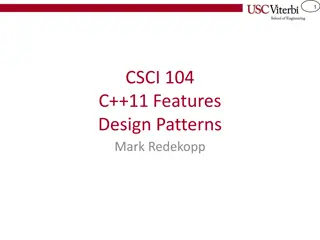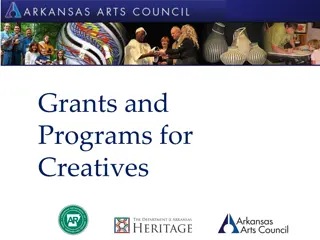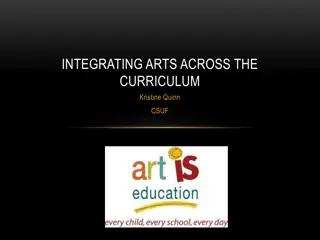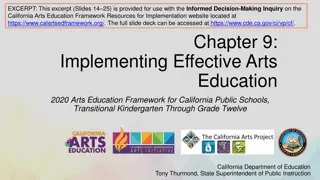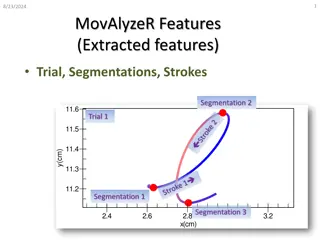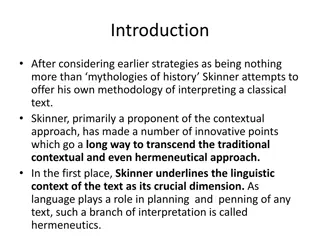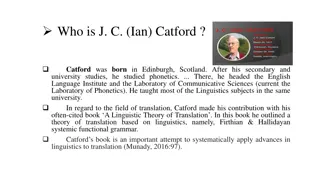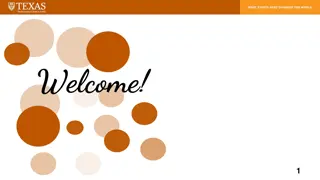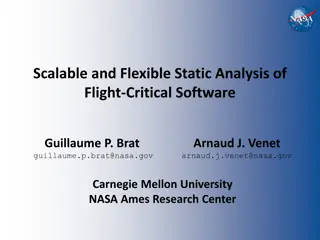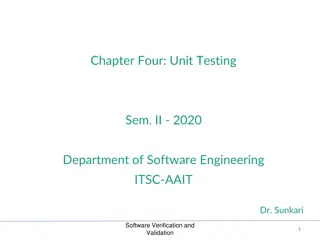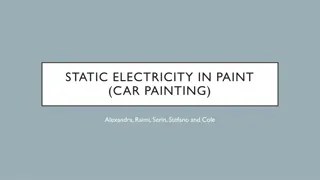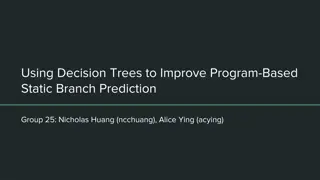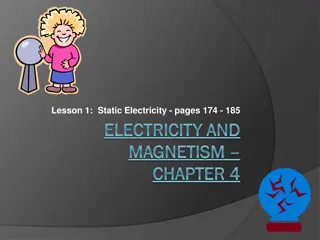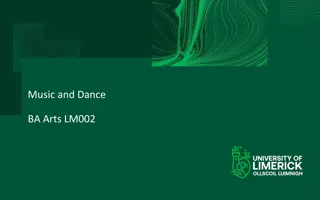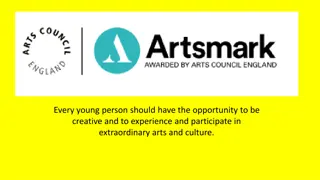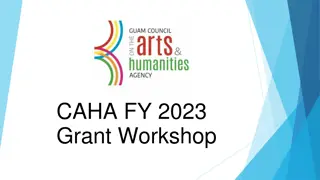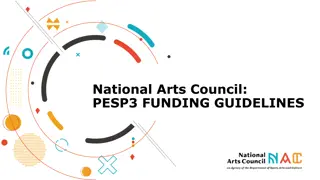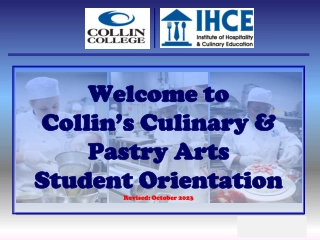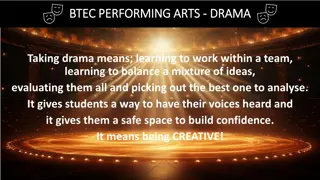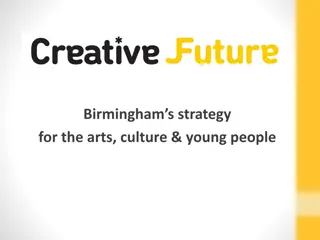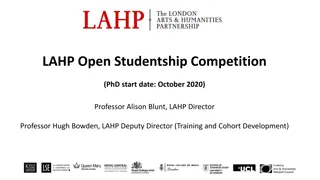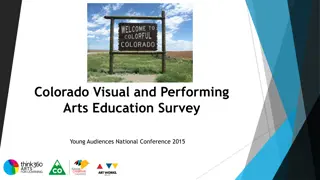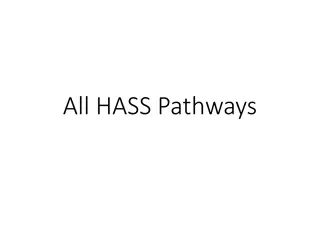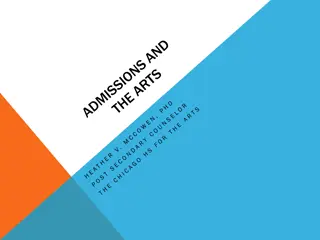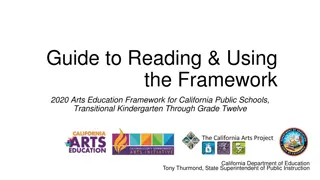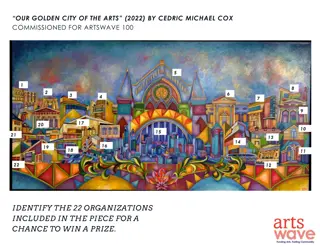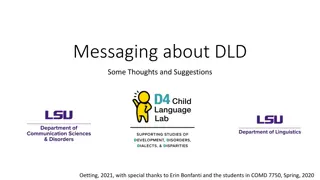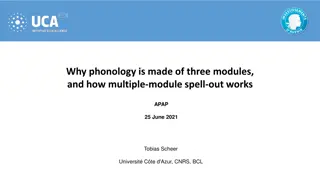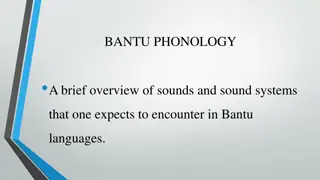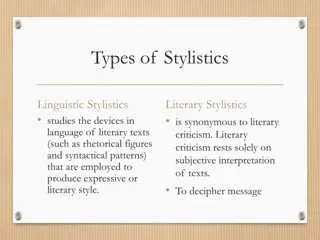Linguistic and Textual Features of Ad in Static Arts
Explore the linguistic and textual features of advertising in static arts, focusing on the use of present tense, short declarative sentences, and vivid vocabulary. Understand how cohesion, repetition, and non-finite verbs contribute to the impact of museum advertisements compared to general ads.
Download Presentation

Please find below an Image/Link to download the presentation.
The content on the website is provided AS IS for your information and personal use only. It may not be sold, licensed, or shared on other websites without obtaining consent from the author. Download presentation by click this link. If you encounter any issues during the download, it is possible that the publisher has removed the file from their server.
E N D
Presentation Transcript
AD FOR STATIC ARTS MODULE 4 UNIT 3 CHRIS TAYLOR UNIVERSITY OF TRIESTE Dept. of Legal, Language, Translation and Interpreting Studies, Section of in Modern Languages for Interpreters and Translators University of Trieste, Via Filzi, 14 - 34144 Trieste, Italy Project numberStudies: 2016-1-IT02-KA203-024311 www.adlabproject.eu FUNDED BY THE ERASMUS + PROGRAMME OF THE EUROPEAN UNION
FIRST CONSIDERATIONS Provide general information on the work; Give an explanation of the style, movement, period of the exhibit.
MORE CONSIDERATIONS Help the person with sight loss (PSL) to build up the image (colours, shapes, position of objects).
MORE CONSIDERATIONS Careful use of vocabulary; Offer the chance to touch the exhibits.
LINGUISTIC AND TEXTUAL FEATURES OF AD IN GENERAL AD is a genre distinguishable from other types of text.
LINGUISTIC FEATURES OF AD (Almost) exclusive use of present tense; Short, paratactic, declarative sentences; More than usual use of verbs; Vivid vocabulary, particularly adjectives.
TEXTUAL FEATURES OF AD Cohesion through repetition and anaphoric reference; More than usual use of non-finite verbs in theme position; Isolated noun phrases.
LINGUISTIC AND TEXTUAL FEATURES OF AD FOR MUSEUMS Thus many of the features pertaining to AD in general apply also to static arts AD. However there are some important differences.
DIFFERENCES Concision, timing and synchronisation, which are so important, for example, in film AD, are not so necessary in static art description.
CONCISION Screen AD generally requires the use of short, simple, paratactic sentences, while static art AD is not subject to such strict limitations.
TIMING Timing is of paramount importance in screen AD where the text has to be inserted between stretches of dialogue, but in static art AD this is unnecessary.
SYNCHRONISATION Whereas in screen AD, the text has to be synchronised with the moving pictures, static art does not require such precision.
APPRAISAL While for AD in general the use of appraisal (personal interpretations, subjective description) is either frowned upon or acceptable in small doses, museum AD allows for more liberty in this respect.
EXAMPLE OF APPRAISAL The phrase a beautiful girl in film translation is a subjective opinion and should be avoided. In describing art, more flexibility is afforded the describer e.g., these magnificent 17th century tapestries .
AN EXAMPLE FROM MIRAMARE CASTLE, TRIESTE the walls are covered with rich, cream-coloured silk, hand painted with floral patterns to achieve a perfect oriental style.
ANALYSIS AND CRITICISM You should be able to analyse and criticise existing ADs. To what extent have the considerations (slides 2-4) been followed? Is there sufficient or too much detail?
ANALYSIS AND CRITICISM (2) Are the features described suitable for the audience (art lovers, ordinary members of the public, the elderly, children)?
ANALYSIS AND CRITICISM (3) Have the linguistic and textual features of the genre been applied? Is there sufficient, or too much, appraisal?
ANALYSIS Please refer to the additional video AD ANALYSIS for advice on analysing the audio description of this picture.
AD FOR STATIC ARTS MODULE 4 UNIT 3 CHRIS TAYLOR UNIVERSITY OF TRIESTE Dept. of Legal, Language, Translation and Interpreting Studies, Section of in Modern Languages for Interpreters and Translators University of Trieste, Via Filzi, 14 - 34144 Trieste, Italy Project numberStudies: 2016-1-IT02-KA203-024311 Edited by: editor s first and last name www.adlabproject.eu FUNDED BY THE ERASMUS + PROGRAMME OF THE EUROPEAN UNION
The preparation of this presentation was supported by ADLAB PRO (Audio Description: A Laboratory for the Development of a New Professional Profile), financed by the European Union under the Erasmus+ Programme, Key Action 2 Strategic Partnerships, Project number:2016-1-IT02-KA203-024311.
The information and views set out in this presentation are those of the authors and do not necessarily reflect the official opinion of the European Union. Neither the European Union institutions and bodies nor any person acting on their behalf may be held responsible for the use which may be made of the information contained therein.


